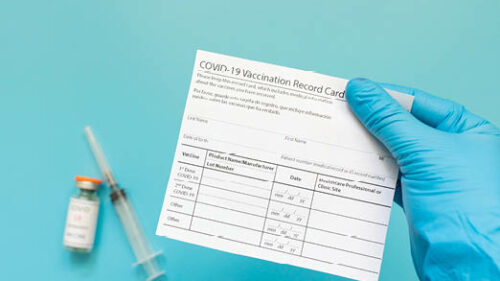Over the weekend, the U.S. Court of Appeals for the Sixth Circuit reinstated the Occupational Safety and Health Administration’s (OSHA’s) emergency temporary standard (ETS) for employee COVID-19 testing and vaccination. This has already been appealed to the United States Supreme Court.
Key Takeaways
The OSHA ETS sets a COVID-19 vaccination standard for private sector employers with 100 or more employees. In order to meet the requirements of the ETS, employers must ensure that their employees are either:
- Fully vaccinated against COVID-19 OR
- Get tested for COVID-19 at least weekly (if in the workplace at least once a week) or within 7 days before returning to work (if away from the workplace for a week or longer). The ETS also states that unvaccinated workers must wear a face covering in connection with certain work situations.
While OSHA states that employers are not responsible for any costs associated with COVID-19 testing for unvaccinated employees, be aware that other laws, regulations, or other requirements (like a collective bargaining agreement) might mandate that the employer pays for the test(s).
The ETS now has a compliance deadline of January 10, 2022, for most provisions and February 9, 2022, for testing requirements to be in place.
Getting Started
If you’re a covered employer, you should develop your own response to the ETS based on your unique circumstances in consultation with your legal counsel. However, the following best practices are suggested if you’re looking for some direction:
Understand the ETS
OSHA has created a dedicated website with the information employers need to comply with the standard. The complete rule as published in the Federal Register is accessible from the site, but its length of more than 400 printed pages may be a challenge to many businesses. Therefore, we recommend that businesses pay attention to the following resources:
- Fact Sheets — The About the ETS and ETS Summary highlight the critical provisions of the full standard. Other sheets cover Workers’ Rights, Penalties for Knowingly Supplying False Information, and Reporting COVID-19 Fatalities and In-Patient Hospitalizations.
- Webinar — For those who prefer listening and watching, this 28-minute video outlines the same information that’s covered in the Fact Sheets.
- FAQs — OSHA has anticipated the most common questions employers will have about the ETS and has created a series of FAQs about Purpose, Scope and Application, Employer Policies, Dates, and more. These FAQs provide an excellent overview of the provisions of the ETS.
Get Started on the January 10 Provisions
Time is of the essence in complying with the standard. Please refer to 12A of the FAQs page (paragraph m of the rule) for the exact requirements effective on January 10, 2022.
Establish a Testing Plan, If Applicable
The final key date in the ETS is February 9, 2022, at which point employers must ensure employees who are not fully vaccinated are tested for COVID-19 at least weekly (if in the workplace at least once a week) or within 7 days before returning to work (if away from the workplace for a week or longer). If your company will not be requiring mandatory vaccinations, develop your plan for testing and tracking of test results consistent with the provisions of the ETS. We expect employers will comply with this provision in a variety of ways, including in-house spreadsheets, use of third-party vendors, etc. Records must be maintained in accordance with 1910.1020 and preserved while the ETS is in effect.
If you have any questions, please feel free to reach out. This is a complicated topic, and we’ll do our best to guide you so you’re in compliance.





